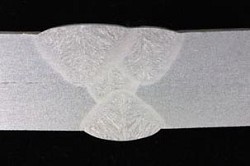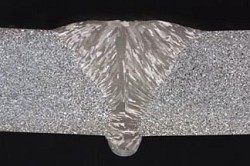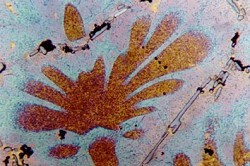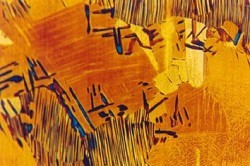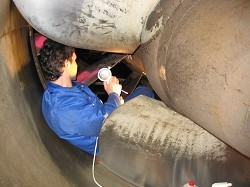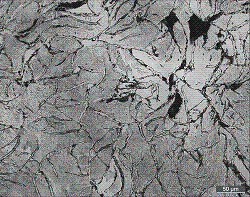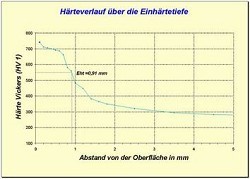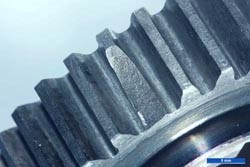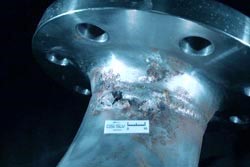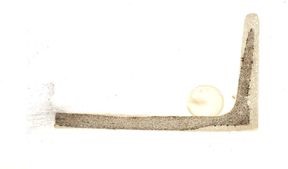Metallography
In our metallographic laboratory with modern equipment in compliance with the applicable safety regulations, it is possible to represent and characterise the macrostructures and the microstructures as well as their compositions on all metallic materials, on welded, brazed/soldered and adhesive-bonded joints as well as on coating systems.
The representation of a prepared macrosection, at a maximum magnifying power of 10:1, makes it possible to visualise the macrostructure over the cross section under investigation. The existing weld quality can be checked according to the relevant standards (e.g.: DIN EN ISO 5817 or DIN EN ISO 10042). The detailed representation of imperfections (segregations, weld imperfections such as cracks, lack of fusion etc.) is guaranteed too.
The preparation of a microsection makes it possible to represent and evaluate structural compositions of a material in a light microscope. The microstructures can be represented at magnifying powers between 12.5 times and 1,000 times. Conclusions can be drawn about the type of material manufacture, individual material properties, the existence of heat treatments and the occurrence of the detected weld imperfections.
On microsections, the material grain size (e.g. DIN EN ISO 643 or DIN EN ISO 2624) and degree of purity (DIN 50602 or DIN EN ISO 10247) of metallic materials can also be determined according to various methods and standards.
To the topic of microsections, preparation and evaluation we perform metallography courses for various materials.
Ambulatory metallography – component metallography
In power plants, factories, chemical plants, on turbines, vessels, tanks and pipes often there is no possibility to take a sample for a metallographical examination.
By means of the ambulatory metallography the component to be examined can be roughend, polished and etched on site - like in the laboratory. For the metallographic examination negative imprints are made of the prepared spot, which allow an exact microstructural investigation in the laboratory.
With the ambulatory metallography statements about the structure, the heat treatment conditions, the change of the structure and the creep damage can be made without destroying the component.
Hardness testing
With our hardness testing devices, we can determine hardness values according to various standards. In addition to individual hardness values, it is possible to record hardness traverses and measuring grids.
A fully automatic Vickers hardness tester as well as a manual device in the load range from HV 0.01 to HV 10 are at our disposal for this purpose. The hardness measurements can be taken on metallographically prepared macrosections and microsections. If you need hardness values according to Rockwell or Brinell, we can determine these on a manual device too (see DT).
Damage examination
For a thorough analysis of the damage a metallurgical evaluation of the damage cause is a significant part. With a combination of various testing methods and their results the damage can be detemined and, if necessary, weaknesses, that caused the damage can be located. Thereupon the products can be optimized whereby future damage can be avoided.
Independent thereof, if the damage are cracks in a component or a complete fracture, if the component is corroded or wears off too fast. With the accredited laboratory of the GSI mbH, NL SLV Munich you have a partner on your side, that performs, evaluates and documents damage examinations reliable.
One cost-favourable way of establishing the casting conditions of steels is to take a sulphur print according to Baumann. This print technology makes it possible to detect the sulphur distribution in the steel across the material thickness. In the material core, particularly old steels manufactured by means of unkilled casting exhibit segregration zones which may exhibit not only, in part, very high sulphur contents but also phosphorus. Since these elements exert embrittling effects, they restrict the weldability. Without any knowledge of the presence of a segregation, the material cannot be quantified reliably by means of spark spectral analysis which is usually carried out just a few millimetres below the material surface. The sulphur print according to Baumann therefore constitutes a quick and reliable procedure for the detection of sulphur segregations.





